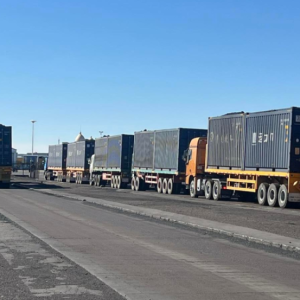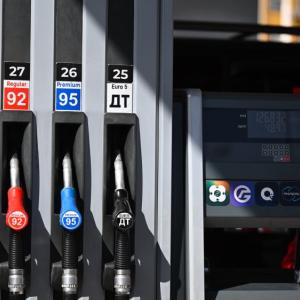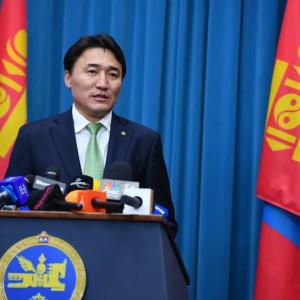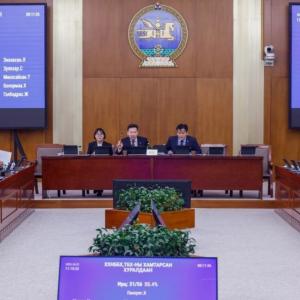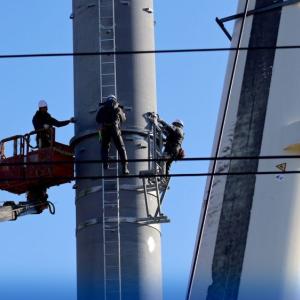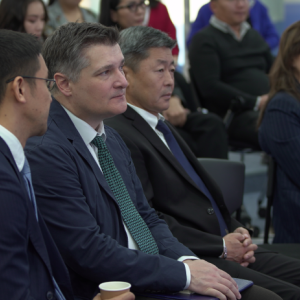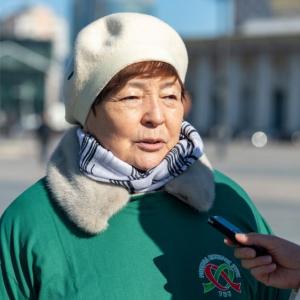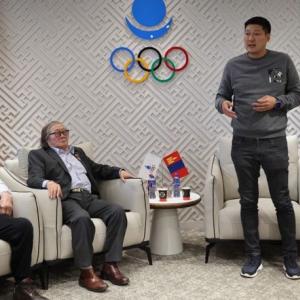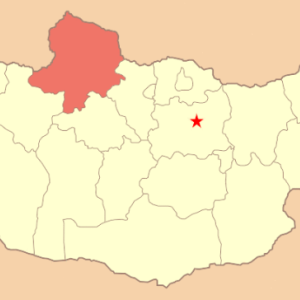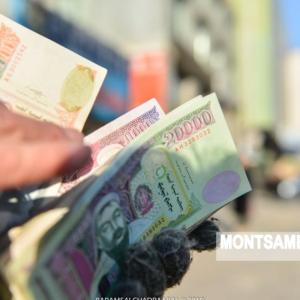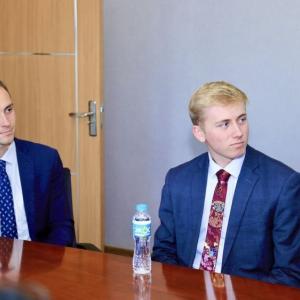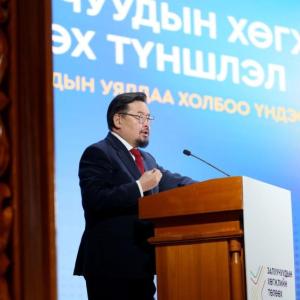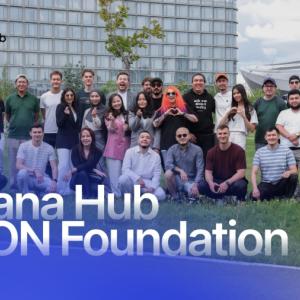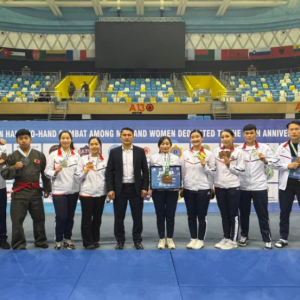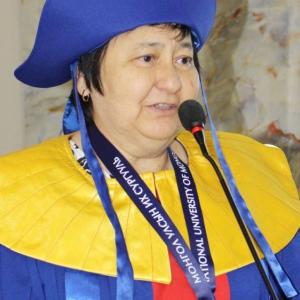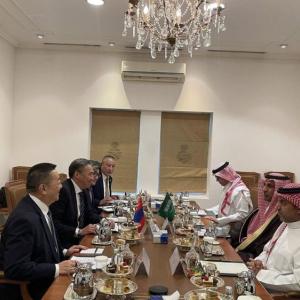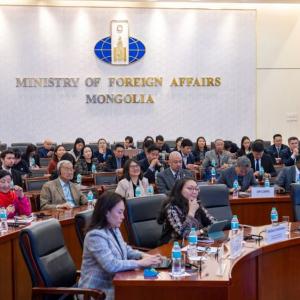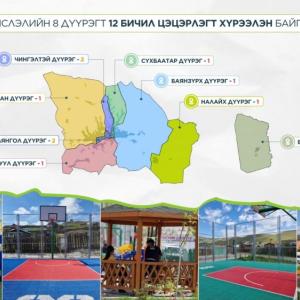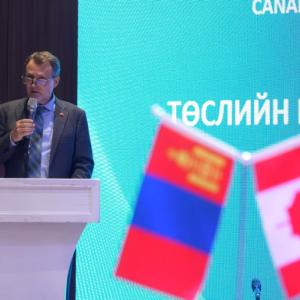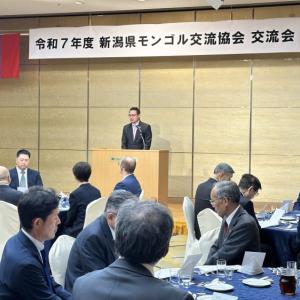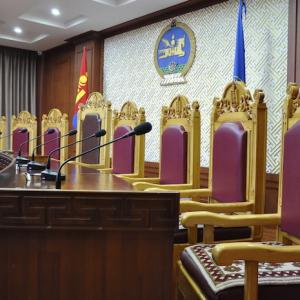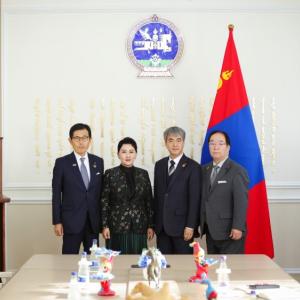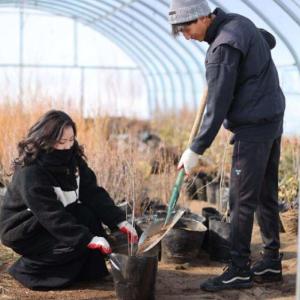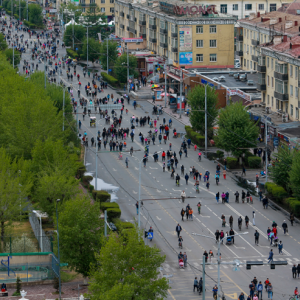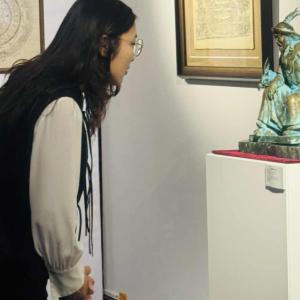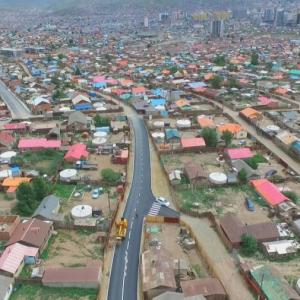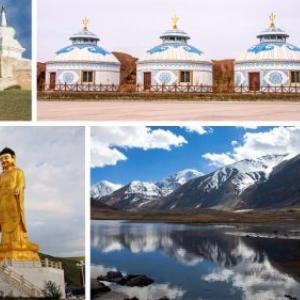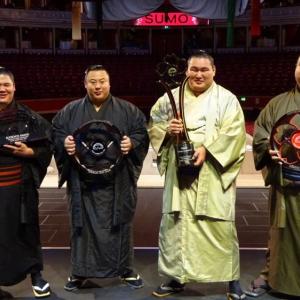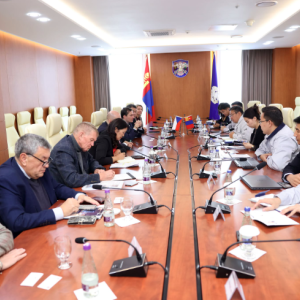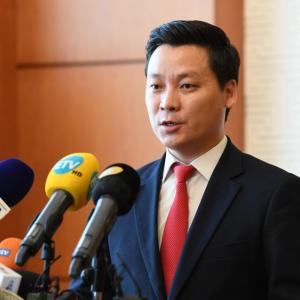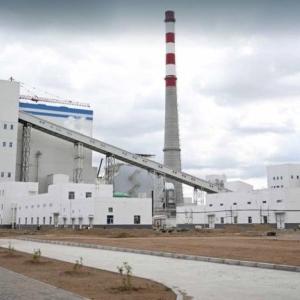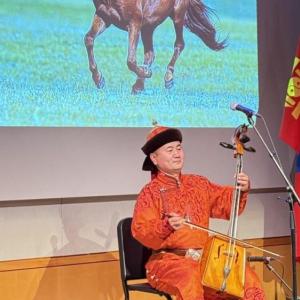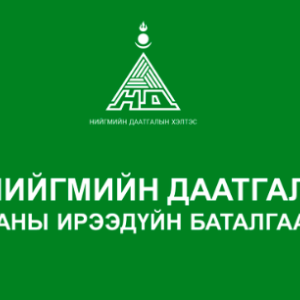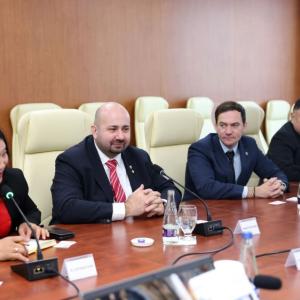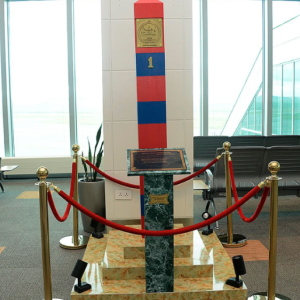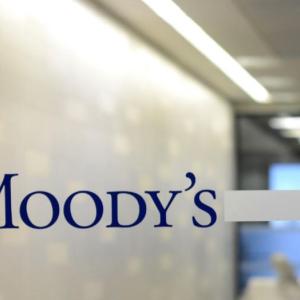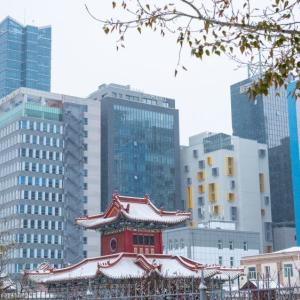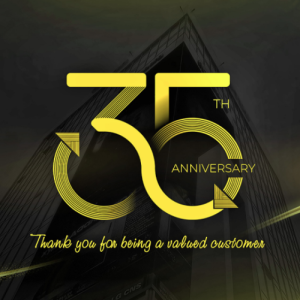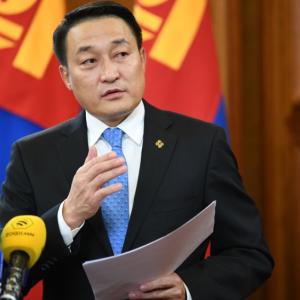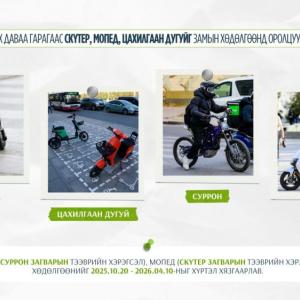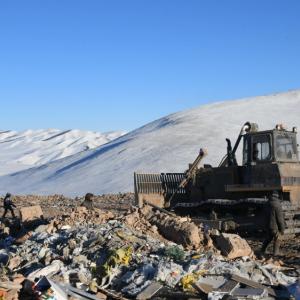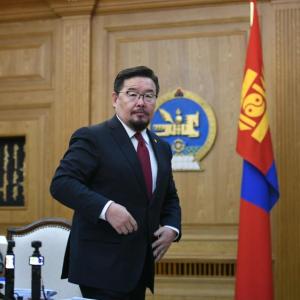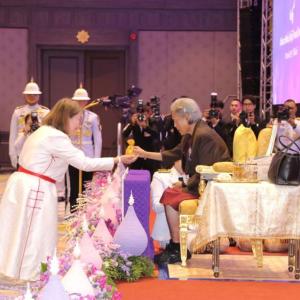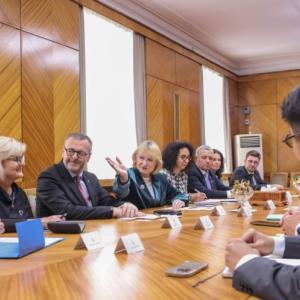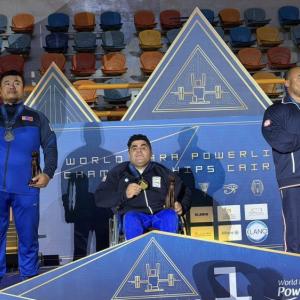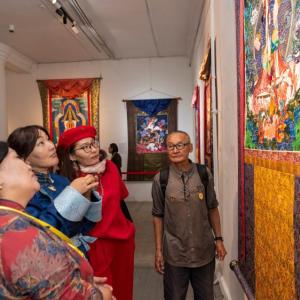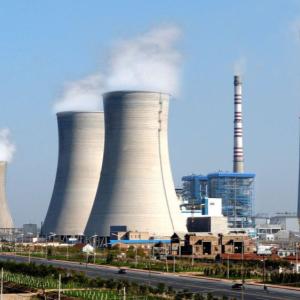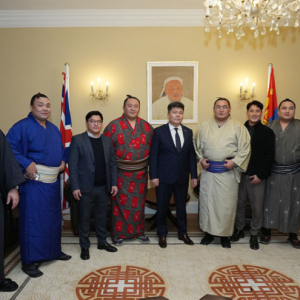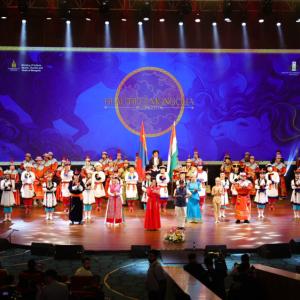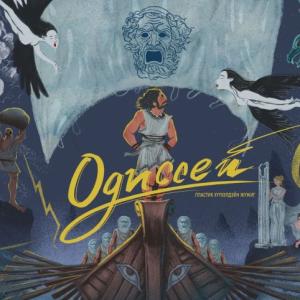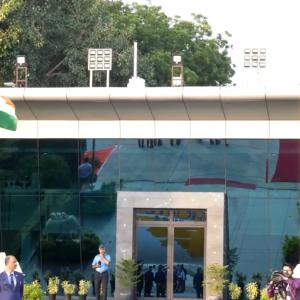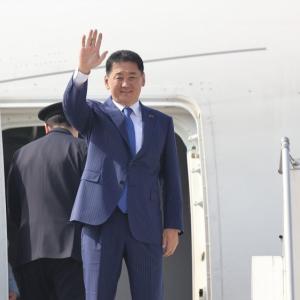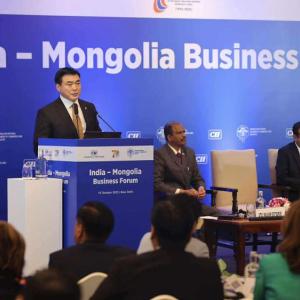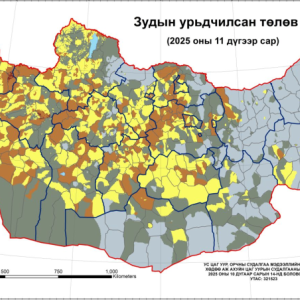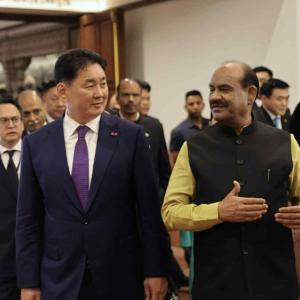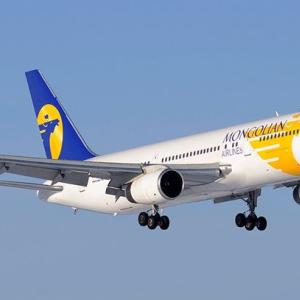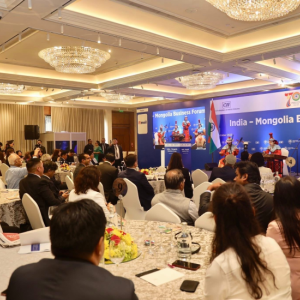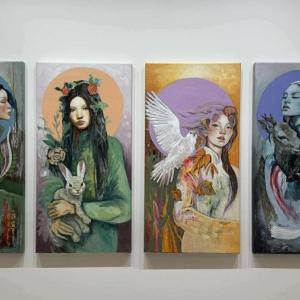Michael S. Klecheski :This strategic partnership is more than just words on paper
The Mongol Messenger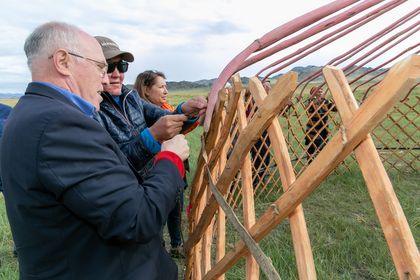
MONTSAME news agency interviewed U.S. Ambassador
Michael S. Klecheski.
1. Mongolia attaches great importance to its
relationship and cooperation with the United States within the framework of its
third neighbor policy. Mongolia became the 17th country to establish
a strategic partnership with the United States, showing that the United
States also attaches importance to its relationship with Mongolia.
More than a year has passed since the U.S. – Mongolia strategic partnership was
established. What progress and changes do you think have taken place in
bilateral relations and cooperation to date?
Our
strategic partnership is important not just for our two nations but for the
entire region because it represents a shining example of international
cooperation between democracies. Our relationship is founded on our shared
values of democracy, human rights, free and fair private sector economic
growth, and the sovereignty of nations. These are fundamental values in both
our countries – they are very real, in that both Americans and, I am
convinced, Mongolians, genuinely believe in them in practice - and
this is why our partnership is so strong and growing even closer.
We
have seen this commitment to democracy in vibrant action this year, with
historic national elections in both our countries. Our shared democratic values
mean that citizens of both our countries have the freedom to demand that our
government protect and guarantee human rights, rule of law, religious freedom,
diversity, and inclusion, and that we are free to express our views and
concerns when we see these rights being threatened.
This
strategic partnership is more than just words on paper. We are delivering real
results for real people in both our countries. USAID was close to closing in
Mongolia. Under the strategic partnership USAID is coming back in a big way
now. We recently welcomed two full-time American USAID officers at the Embassy,
including our new Senior Development Advisor Gary Robbins. These are the first
American officers to be assigned full-time to Mongolia in several
years. They are in the final stages of developing a new strategy to support
Mongolia’s development, with particular attention on inclusive,
sustainable, private sector economic growth, good governance and various
practical aspects of the democratic process, like participation
in government.
Over
the last year, USAID significantly ramped up its Mongolia programming,
including $1.7 million in COVID-19 assistance; a $15 million SME support
program we call BEST to help small- and medium-sized businesses survive the
pandemic; a $3 million nonpartisan program to provide voter information and
support the participation of women and young people in parliamentary, local,
and presidential elections; $2.7 million to help Mongolia transition to a
private-sector-led energy market; and $6.6 million for Leaders Advancing
Democracy (LEAD), which is helping empower a new generation of Mongolian youth
leaders.
Also,
the numbers of scholarships, exchanges, and English learning opportunities we
offer is increasing, and will really flourish once we get beyond the
coronavirus pandemic. I know that learning English is a top priority for
many Mongolians, since it is in many ways the international language for
business, science and technology, and much else, so we’re really
focusing on it. And, finally, over the last year, through our Defense
Attaché’s Office, we have built four state of the art kindergartens
in various regions of Mongolia, totaling about $2 million in
U.S. taxpayer dollars. People across Mongolia always tell me they need more
English teaching and kindergartens, and we are doing what we can to meet this
need.
2. Mongolia and the United States officially
established diplomatic relations in 1987, and the relations between the
people of the two countries dates back hundreds of
years. Evidence shows that American
businesspeople and citizens have been coming to Mongolia for
over a hundred years with an interest in business, especially in the fields of
agriculture and mining. How do you see the future direction of
bilateral relations?
You
are so right. While on one hand, our relationship became much
closer when Mongolia made the courageous, and in my mind correct, decision to
embrace democracy, the relationship between the people in Mongolia and the
United States and our commercial relationship goes back much further.
I
read in the excellent books by Jack Weatherford that the concept of religious
freedom, yet another fundamental value our nations share, may have been
inspired by Mongolian history. In fact, one of the founding fathers of the
United States and our third president, Thomas Jefferson, kept a copy of the Secret
History of the Mongols in his library. This book is now a part of the Library
of Congress, which the public can visit and see. So, our history together
certainly goes back to the foundation of our country.
Last
year, before the coronavirus pandemic, our Embassy welcomed a record number of
high-level U.S. official visitors to Mongolia, including our secretary of
defense and national security advisor. And I had the honor of traveling to Washington,
D.C., for President Battulga’s official visit. While the pace
may have picked up, these visits are not new. Even before we had a formal
diplomatic relationship, President Franklin D. Roosevelt dispatched his Vice
President, Henry A. Wallace, to Mongolia in 1944. And Supreme Court Justice
William O. Douglas visited Mongolia in 1962 with the National Geographic Society.
In addition, interest in Mongolia in the U.S. Congress continues to be strong,
and we hope to resume robust interparliamentary exchanges as soon as travel
becomes possible again.
As
for the future, I think that our shared democratic values and the real
friendship between our people will continue to drive our countries closer
together, despite the distance. One thing that could really accelerate the
connections between our countries would be direct flights. We have had a small
number of them to repatriate Mongolians and deliver welcome medical supplies to
the United States. We stand ready to work with Mongolian authorities to try to
make direct commercial and passenger flights a reality. That, together
with a new airport, would really be a boon for business, tourism, and
education, and it would be fantastic to make it so much easier for Americans to
be able to come see Mongolia so much more easily, and vice versa. The recent direct diplomatic flights gave us
momentum, but regularizing the direct flights still requires substantial
procedural steps that both sides must work on.
3. The U.S. Presidential Election
was recently held. When the Republican Party candidate Donald Trump served
as president, there were many great improvements
in bilateral relations. How has Democratic Party candidate
Joe Biden, who won the majority of votes, defined the main line of
his foreign policy? What specifically will be the difference of his policy
towards Asia and Mongolia from the policy of Trump?
The
2020 presidential election was really remarkable. Despite the pandemic
we saw record numbers of Americans exercise their right to vote, many with
mail-in ballots. It was inspiring to me to see democracy in action in both
Mongolia and the United States this year.
As
for the future of our relationship, what I can tell you is that support
for a strong partnership with Mongolia has been and will continue to be
bipartisan, not just in the White House, but in the U.S. Congress. In the over
30 years since we established diplomatic relations, Mongolia has welcomed high
level visits from representatives of the two major American political
parties, and both Republican and Democratic presidents, vice presidents,
and secretaries of state have met with their Mongolian counterparts here
and in Washington. I fully expect that to continue as soon as it is safe to do
so.
4. Do you agree that economic cooperation
between Mongolia and the United States is insufficient? During Prime Minister
U. Khurelsukh's visit to the United States in 2018, a roadmap for an
expanded economic partnership between the two countries was approved. At what
stage is this roadmap?
Our
economic relationship is very good and growing stronger, and we are continuing
to work hard with our Mongolian partners to create trade and investment
opportunities that benefit people in both our countries. As an example, trade
between our countries reached new highs just before the pandemic struck. U.S.
exports reached a five-year high in 2019, and Mongolian exports to the U.S.
more than doubled from the year before. On the investment side, we
also have seen record growth in U.S. foreign direct investment in
Mongolia. And the United States is actually the fourth-biggest source of
foreign direct investment in Mongolia, I’m proud to say.
We
are doing a lot to partner with the government and the business community to
make Mongolia’s investment climate even more attractive for foreign
investors. Investors really value reliable information and transparency. We are
working hard to get full implementation of the U.S.-Mongolia Transparency
Agreement, which requires the Mongolian government to post draft rules
affecting international commerce for public comment prior to becoming final. A
website called Legalinfo.mn that will give the public a chance to comment on
regulations affecting business before they are finalized should be live next
spring. This will really help bring openness and transparency to business
regulations.
Our
embassy has worked closely with your government to get Mongolia removed from
the FATF gray list and strengthen its anti-money laundering and counter
terrorist financing systems. This was crucial for Mongolia’s economic growth,
and I am proud our government played an important supportive role. We did
so through some very practical steps. In particular, the United States
helped Mongolia obtain a sophisticated software package called goAML, which will substantially
improve Mongolia’s ability to investigate suspicious money laundering
transactions. We also helped fund the World Bank Stolen Asset Recovery
Initiative to get back Mongolian money and property that belongs to the people.
We brought a full-time U.S. Department of the Treasury technical advisor
and anti-money laundering expert to work with the Bank of Mongolia’s
Financial Information Unit, and we hope he will be able to return to
continue his work here. And we organized a full and
intense week of training in financial investigations for
Mongolian law enforcement; numerous trainings for Mongolian customs agents; and have
worked closely with other diplomatic missions and international financial
institutions to coordinate and amplify our efforts. All of our work, and the
impressive and serious actions by the Mongolian government, have paid off, I’m
happy to say.
One
more thing. We know how small and medium sized businesses are struggling during
the pandemic. Through USAID, we started a $15 million SME support program
called BEST, as I mentioned earlier. This program is helping small- and
medium-sized businesses improve their operations and governance, and unlock
access to bank loans. There are BEST offices across the country available to
help businesses with information, training, and grants. If you run a business
that needs assistance, please see the Facebook page @BESTprogramMN to learn
more. I think you’ll be impressed.
5. Processed wool and cashmere products are
Mongolia's most resource-rich export products. What kind of efforts are needed
on both sides to cooperate in this area?
Helping
to strengthen Mongolia’s private sector and trade and investment ties with the
United States is my top priority, as I said during my U.S Senate confirmation
hearing. As democratic third neighbors we care about Mongolia’s success and are
committed to help.
When
consumers better understand the value of Mongolian cashmere as a quality
product, as I certainly do, sales and profitability will increase. Which is why
we’re excited about our program to help Mongolia brand and market their
products, so American and other customers know that when they look for
cashmere, they know that Mongolian cashmere is ethically produced and of the
highest quality. We are also providing a $5 million loan to help a
woman-owned Mongolian cashmere producer build a new factory and buy additional
equipment through the U.S. International Development Finance Corporation (DFC).
This will help provide a good, stable income to their mainly women employees
and the rural herders who supply the raw cashmere.
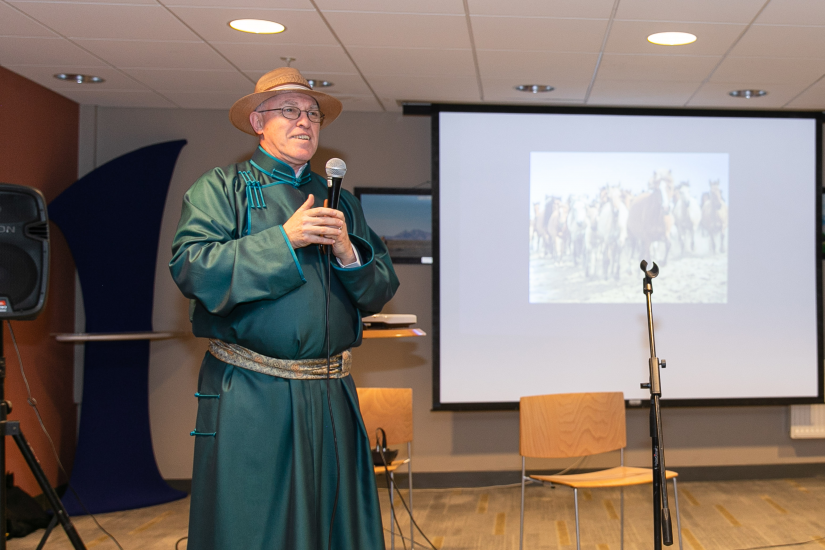
6. Mongolians believe that the
approval of the "Third Neighbor Trade Act" by the U.S. Congress
will turn a new page in bilateral economic relations. Can you share
your views on this?
This act is before
the U.S. Congress at the moment, and I am not in a position to forecast
how it will fare, or to discuss any pending legislation, really. What
I can tell you is that I know this bill was discussed at many senior-level
meetings in Washington, D.C. As I just mentioned in talking
about our support for branding, this is just one way we are working with
Mongolia to develop the cashmere and wool sector. Tariff relief is just one
part of our overall package of support.
7. Under the second MCA-Mongolia Compact,
Mongolia received non-refundable aid of USD 350 million to implement three
major projects to improve Ulaanbaatar's water supply. What is the
progress?
Indeed, as
I trust that most Mongolians are aware, we are providing a second
Millennium Challenge Account Compact. The $350 million grant to the water
supply program is one of the largest single commitments the U.S. has made in
the Indo-Pacific region. It will bring many new jobs for Mongolians over
its five-year lifespan and increase Ulaanbaatar’s water supply by 80 percent.
This is really important, because this growing city is about to run out of
water if the problem isn’t addressed. It is quite rare for a country to
qualify for a second compact, so we commend Mongolia for its good
initiatives and transparent management of the compacts. As you can imagine, at the
beginning of large projects like this, there is a lot of hiring, contracting,
and planning, which is necessary for the success of the program once we start
the building phase. Progress is good and we are on track. What makes the MCC
unique are strict requirements and measures to ensure transparency, and unlike
some other international infrastructure development programs around the region,
it is a grant, not a loan with strings attached or a debt trap.
8. U.S. Secretary of State Mike Pompeo
was scheduled to visit Mongolia this month. However, it was postponed
indefinitely. When will the visit be rescheduled? What issues are planned to be
discussed during this visit?
The
Secretary of State was disappointed he could not come to Mongolia, as he told
President Battulga in a phone call, because President Trump had just contracted
coronavirus. I was touched that so many Mongolians expressed their
understanding and wishes for our president to recover. Although we had to
postpone the visit, I can assure you that we are maintaining the momentum of
our important bilateral discussions on ways to deepen our economic, diplomatic,
security, and people to people ties. For example, we recently held our Economic
Policy Dialogue with senior interagency representatives of both our countries.
We would certainly welcome a high-level visit when it is safe to do so.
9. In 1921, Roy Chapman Andrews, an American
explorer, made a sensational announcement to the world that dinosaurs
laid eggs after his discoveries were found in Mongolian Gobi. At what
stage is cooperation in the field of archeology today?
Obviously,
the pandemic has slowed research progress, but it was really moving along
incredibly well, and I’m so proud that the embassy is a strong partner
in this field. Whether it is providing Fulbright scholarships for top American
archeologists like Dr. Will Taylor, or helping preserve ancient Mongolian
textiles found by Dr. Julia Clark and the American Center for Mongolian Studies
through the Ambassador’s Fund for Cultural Preservation, we are doing all we
can to help. Speaking of cultural preservation, I’m very happy that through
this same fund, the embassy is helping to restore and preserve the majestic Choijin Lama Temple in Ulaanbaatar,
which is a beautiful symbol of the resilience of faith and religious freedom in
Mongolia. As some of my social followers may know, the field of archeology
fascinates me, so that I read a lot about it, go to museums every chance I get,
and listen to the lectures of the American Center for Mongolian Studies and
other institutions on this and other subjects.
10. President of Mongolia Kh.Battulga visited NASA
during his visit to the United States. During the meeting, he touched upon
cooperation with NASA, and the head of the organization was invited to
visit Mongolia. Is there any potential cooperation possibilities between
the countries in the field of space science?
That
was one of the highlights of President Battulga’s visit to the United States and I was glad to accompany
him. The United States cooperates with many countries on science, technology,
innovation, and space exploration. We welcome Mongolia’s continued development
of its STEM fields including as it relates to satellites and space exploration.
Working with allies and partners to enhance cooperation in civil,
commercial, and national security space activities is one of the United States’
highest space policy priorities.
11. According to Mark Tasse, Director of the
Mongolian Studies Center in the United States, Mongolian
studies were established in the United States more than 100 years
ago. How are Mongol studies developing in the United States lately?
American
interest in Mongolian studies, history, culture, and society is growing in so
many ways. We can see that in the record numbers of Americans who visited
Mongolia, before coronavirus affected international tourism. I’m
really proud that during last year’s “Year of Youth” program, we added new
Fulbright opportunities for Mongolian professors and scholars to teach and
research in the United States, which will help meet this increased interest in
Mongolian studies. Every year we also send a Mongolian English teacher to teach
the Mongolian language at American universities, while studying English
teaching methodologies.
I
already mentioned the very successful and fascinating books by Jack
Weatherford. The HU had an incredibly successful tour in the United States,
even topping the U.S. rock music charts – my own son attended one of their
concerts in New York City, and loved it - and the artist Magnolian performed
at the highly prestigious South by Southwest music festival
in Austin, Texas and has an American record deal. I’m also really looking
forward to wide distribution of an upcoming film about
Mongolia by Robert Lieberman called “Echoes of the Empire” – I’ve
already seen it and found it absolutely wonderful and really
moving. I think there is a genuine cultural renaissance in Mongolia
today, and interest in all things Mongolian in the United States has never been
higher.
12. Finally, Mr. Ambassador, can you share
your impressions of Mongolia and Mongolians?
My
wife Eloisa and I came to love your country and its people almost as soon as we
arrived, but our feelings have grown stronger and stronger the longer
we’ve been here. We have many Mongolian friends, and we find Mongolians to be
warm and hospitable. We also are struck by the importance they attach to
traditions, in ways that are sometimes obvious, sometimes very subtle. And
those traditions both celebrate and reinforce qualities like hospitality
and respect, as well as awareness of their country’s history.
There
is so much else that we love and find fascinating about Mongolia, and of course
I can’t even begin to describe it all, though I have a feeling that what I put
on social media may capture some of the range of it all. One of the things
we love in every country where we live is the cultural scene, and as I said
earlier, Mongolia’s is lively and fascinating, including in the ways it
brings together the traditional and the modern. As for me,
I enjoy walking around Ulaanbaatar, discovering new things I hadn’t
noticed before that shed light on aspects of your country. It’s funny that
my walks have even led me, kind of randomly sometimes, to wander into the
Wrestling Palace to watch one of Mongolian wrestling, which also led me to
think about the centuries-long history of that sport and of Naadam. And I’ve loved watching
Mongolian basketball games at the Sports Palace. But I better stop here – this
interview could go on and on and I don’t want to bore
people.
 Ulaanbaatar
Ulaanbaatar






